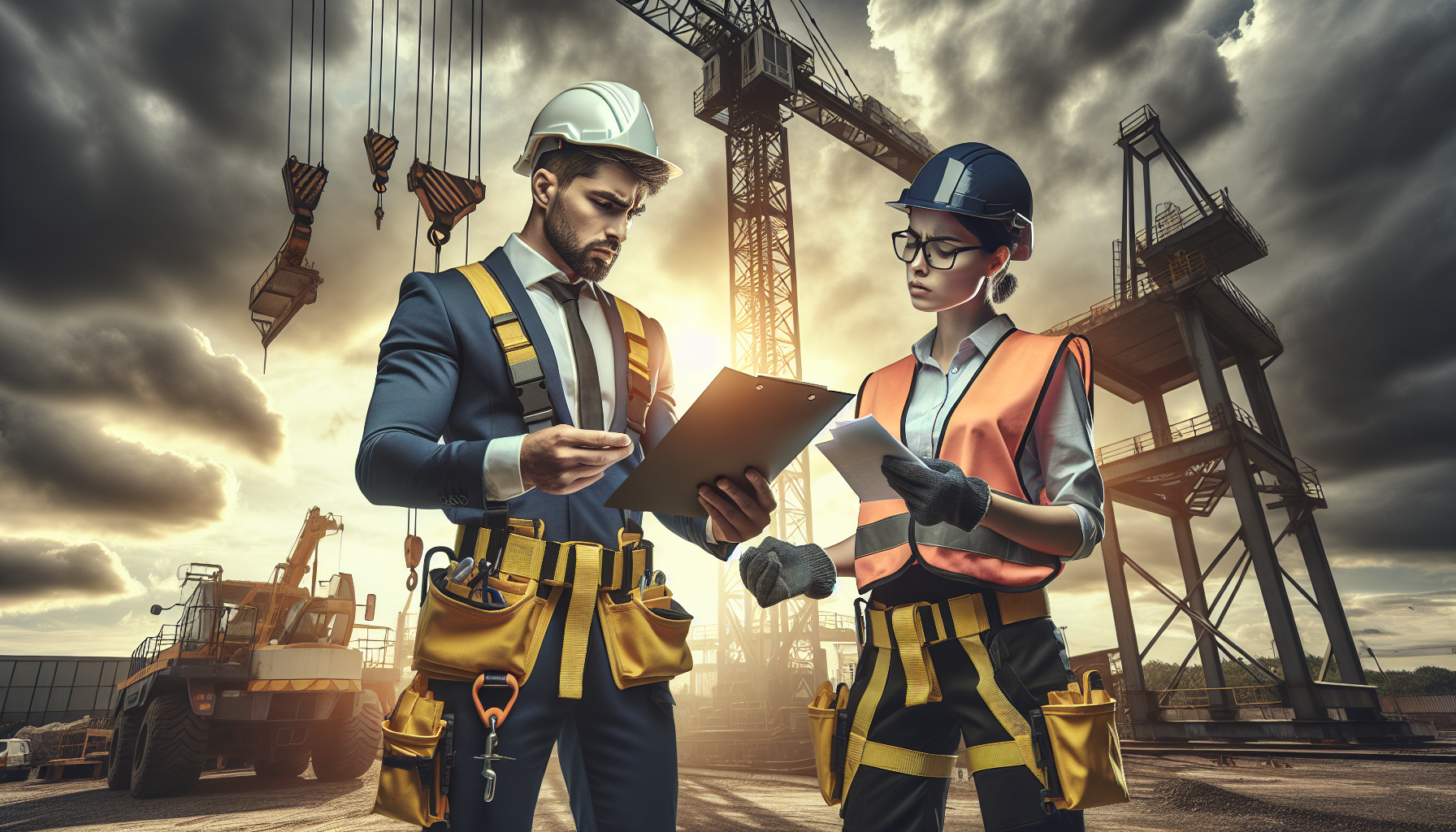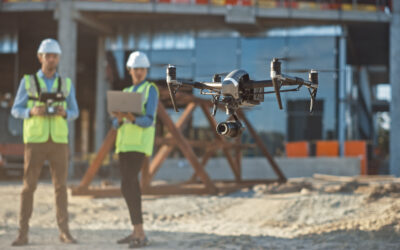
Understanding Lifting Operations and Lifting Equipment Regulations in the UK
 In the realm of workplace safety, the Lifting Operations and Lifting Equipment Regulations (LOLER) of 1998 are pivotal in the UK’s legal framework. These regulations are crucial in protecting employees involved in lifting heavy items or operating equipment relevant to LOLER. As professionals, it’s our responsibility to fully understand these lifting equipment regulations and ensure compliance in all lifting operations. We know that LOLER equipment is not limited to cranes or hoists but includes a variety of apparatus, such as patient hoists, motor vehicle lifts, forklifts, and the essential lifting accessories that secure the load.
In the realm of workplace safety, the Lifting Operations and Lifting Equipment Regulations (LOLER) of 1998 are pivotal in the UK’s legal framework. These regulations are crucial in protecting employees involved in lifting heavy items or operating equipment relevant to LOLER. As professionals, it’s our responsibility to fully understand these lifting equipment regulations and ensure compliance in all lifting operations. We know that LOLER equipment is not limited to cranes or hoists but includes a variety of apparatus, such as patient hoists, motor vehicle lifts, forklifts, and the essential lifting accessories that secure the load.
Aiming for operational excellence and safety, this article is a comprehensive guide on the lifting equipment legislation, including the importance of risk assessment and the LOLER inspection requirements. Under LOLER, we must ensure that all lifting equipment is clearly marked with safe working loads and is subject to regular inspections, adhering to health and safety compliance. Inspections by a competent individual must occur every six to twelve months for equipment and accessories used to carry individuals, or for the lifting accessories themselves, following health safety guidance. Our dedication is to offer insights and expert advice on best practices for lifting operations and the lifting equipment regulations 1998, ensuring legal compliance in the lifting field.
Understanding LOLER Regulations
Dedicated to maintaining the highest standards of workplace health and safety, we examine the complexities of the Lifting Operations and Lifting Equipment Regulations (LOLER), a crucial part of the UK’s health safety law. We highlight the key aspects of LOLER essential for a safe working environment:
Key Provisions of LOLER
- Planning and Supervision: Every lifting operation must be meticulously planned, ensuring that it is carried out safely. This includes selecting the correct lifting equipment for the task at hand and appointing competent personnel to oversee the operation. Our adherence to this requirement is unwavering, as we understand that the safety of our team and the integrity of our operations hinge on this critical planning stage .
- Equipment Suitability and Marking: The lifting equipment we employ must not only be fit for its intended purpose but also appropriately marked to indicate its safe working load. We maintain comprehensive records of all thorough examinations, and we promptly report any defects to the relevant authorities. This practice is not just a legal obligation but a testament to our commitment to operational safety and transparency.
- Thorough Examination and Regular Maintenance: LOLER mandates rigorous examinations of all lifting equipment and accessories at several key stages:
-
- Before initial use
- Following any exceptional circumstances that could jeopardize safety
- At regular intervals during service, especially when the equipment is subject to conditions that could lead to deterioration
We ensure that these inspections are conducted by competent individuals, who are skilled at identifying potential risks and taking corrective actions to mitigate them.
Exclusions and Training
- Exclusions Under LOLER: It is crucial to note that certain equipment is exempt from LOLER regulations. This includes conveyor belts, fall arrest ropes, escalators, and equipment that is not designed primarily for lifting, such as equipment used solely by the public or equipment used by land-based workers on ships. Our operations are carefully audited to distinguish between equipment that falls under the scope of LOLER and that which does not, ensuring full legal compliance.
- Training and Competence: We place significant emphasis on training our staff and management in LOLER compliance. Our training programs are comprehensive, equipping our team with the knowledge and skills required to perform lifting operations safely and efficiently. By fostering a culture of continuous learning, we aim to mitigate or eliminate all risks associated with lifting operations.
Expert Support and Compliance
- Seeking Expert Guidance: Recognizing the complexity of LOLER and its implications for our operations, we often engage with health and safety consultants. These experts provide us with tailored advice, ensuring that our processes remain at the forefront of industry standards and legal compliance. Their insights are invaluable in navigating the landscape of lifting operations and lifting equipment regulations.
By embedding LOLER principles into our operations, we adhere to the law and enhance our standing as a leader in safety and operational excellence. Our proactive risk assessment and adherence to health safety guidance demonstrate our steadfast commitment to employee well-being and project success.
Case Studies of Lifting Operation Incidents
- Incident in Carlisle (2014): Our commitment to safety is further underscored by the lessons learned from past incidents. In a sobering reminder of the critical importance of adhering to lifting operations and lifting equipment regulations, we reflect on a serious accident that occurred in Carlisle. In 2014, during a lifting procedure involving two forklifts, a worker suffered severe injuries when a nearly two-tonne trailer chassis struck him. The accident resulted in multiple cuts and fractures to the worker’s leg and foot. This incident highlights the potential consequences of inadequate risk assessment and reinforces the necessity for rigorous compliance with LOLER legislation to prevent such occurrences.
- Financial and Legal Repercussions: Following the Carlisle incident, Tweddle Fabrications Ltd faced significant legal consequences. The company was fined £12,000, a stark reminder of the financial implications non-compliance with lifting equipment legislation can have on a business. Beyond the immediate financial impact, incidents like these can lead to long-term reputational damage and loss of trust among clients and partners. It underscores the importance of not only meeting but exceeding the requirements set forth by the lifting operations and lifting equipment regulations 1998 to ensure the safety and well-being of all employees and stakeholders involved.
Our comprehensive understanding of case studies shapes our approach to health safety guidance and our commitment to safety policies. Learning from these examples and constantly refining our practices, we strive to conduct lifting operations with the greatest care and in strict compliance with LOLER.
Conclusion
Throughout this article, we’ve thoroughly examined the Lifting Operations and Lifting Equipment Regulations of 1998, emphasizing their importance in fostering a culture of safety and compliance in the UK. By analyzing case studies, legislative specifics, and best practices, our understanding of LOLER has deepened, confirming that meticulous planning, training, and a thorough examination of procedures are key to safe and successful lifting operations. These guidelines are instrumental in preventing physical harm and safeguarding businesses from legal responsibilities and financial consequences.
Embracing the principles of LOLER is essential for the integrity of our operations and the well-being of our workforce, ensuring workplace health safety. While this article has illuminated the path to robust compliance and operational excellence, the journey toward continual improvement in lifting safety and LOLER adherence is ongoing. As we
FAQs
- What is LOLER?
-
- LOLER stands for Lifting Operations and Lifting Equipment Regulations. It is a comprehensive set of rules that aim to improve safety in workplaces where lifting equipment is used, and it applies to all personnel involved in lifting operations on business premises. This includes the selection of suitable equipment, risk assessment, and the execution of tasks in appropriate locations.
- Key Responsibilities and Requirements:
-
- Who is responsible for compliance?
-
- The responsibility for LOLER compliance falls on individuals and companies who own, operate, or have control over lifting equipment. It is their duty to ensure that all equipment is used safely and in accordance with the regulations.
- Penalties for non-compliance:
-
- Failing to comply with LOLER can have severe consequences, including substantial fines, enforcement action, or imprisonment, which underscores the importance of rigorous adherence to the lifting equipment legislation.
- Inspections and Equipment:
-
- LOLER Inspections:
-
- A LOLER inspection is a detailed examination of lifting equipment, ensuring it is safe to use. These inspections must be carried out by a competent person, someone with the practical and theoretical knowledge necessary to assess the equipment thoroughly.
- Frequency of Inspections:
-
- Thorough examinations of lifting equipment are required every 12 months, or every 6 months for equipment used to lift people or any lifting accessory, to ensure ongoing safety and performance.
- Applicable Equipment:
-
- LOLER applies to a wide range of lifting equipment used at work for lifting or lowering loads. This includes cranes, fork-lift trucks, lifts, hoists, mobile elevating work platforms, and even vacuum lifting equipment.
- Regulatory Guidance and Machinery Directive:
-
- HSE’s Role in LOLER:
-
- The Health and Safety Executive (HSE) in the UK provides essential guidance and support for the lifting operations and lifting equipment regulations, including an Approved Code of Practice that offers a brief yet comprehensive guide to lifting equipment at work.
- Machinery Directive Compliance:
-
- Meeting the Essential Health and Safety Requirements of the Machinery Directive 2006/42/EC is crucial. Products, such as those with a travel height over 3.0 metres, that do not meet these requirements are prohibited from being supplied within the EU unless a justified Safeguard Clause is filed.
By integrating these details into our operational protocols and training, we reinforce our commitment to safety, efficiency, and regulatory compliance. Our approach to risk assessment and health safety guidance ensures that we remain at the forefront of industry standards, maintaining our role as a meticulous example of excellence in regulatory compliance.
External Links
Health and Safety Executive (HSE)
- LOLER Overview and Guidance:
- HSE – Lifting Operations and Lifting Equipment Regulations 1998
- This page offers a comprehensive overview of LOLER, including the scope of the regulations, requirements for lifting equipment and operations, and guidance for employers and employees.
- HSE – Lifting Operations and Lifting Equipment Regulations 1998
- Risk Assessment:
- HSE – Risk Assessment
- A detailed guide on conducting risk assessments in the workplace, essential for planning safe lifting operations under LOLER.
- HSE – Risk Assessment
- Thorough Examination:
- HSE – Thorough Examination of Lifting Equipment
- This resource explains the requirements for the thorough examination of lifting equipment, including frequency, documentation, and what to expect during an examination.
- HSE – Thorough Examination of Lifting Equipment
Additional Resources
- British Standards Institution (BSI):
- BSI – Safety of Machinery
- BSI provides standards and publications relevant to the safety of machinery, including lifting equipment, which can help organizations comply with LOLER and the Machinery Directive.
- BSI – Safety of Machinery
- Lifting Equipment Engineers Association (LEEA):
- LEEA – Guidance and Support
- The LEEA offers training, resources, and support for companies involved in lifting operations, focusing on safety, compliance, and best practices.
- LEEA – Guidance and Support
- Royal Society for the Prevention of Accidents (RoSPA):
- RoSPA – Workplace Safety
- RoSPA provides training and resources on various aspects of workplace safety, including handling and lifting, which can complement LOLER compliance efforts.
- RoSPA – Workplace Safety
- Institution of Occupational Safety and Health (IOSH):
- IOSH – Lifting Operations
- IOSH, the Chartered body for health and safety professionals, offers a range of resources that can aid in understanding and implementing safe lifting practices in accordance with LOLER.
- IOSH – Lifting Operations


0 Comments